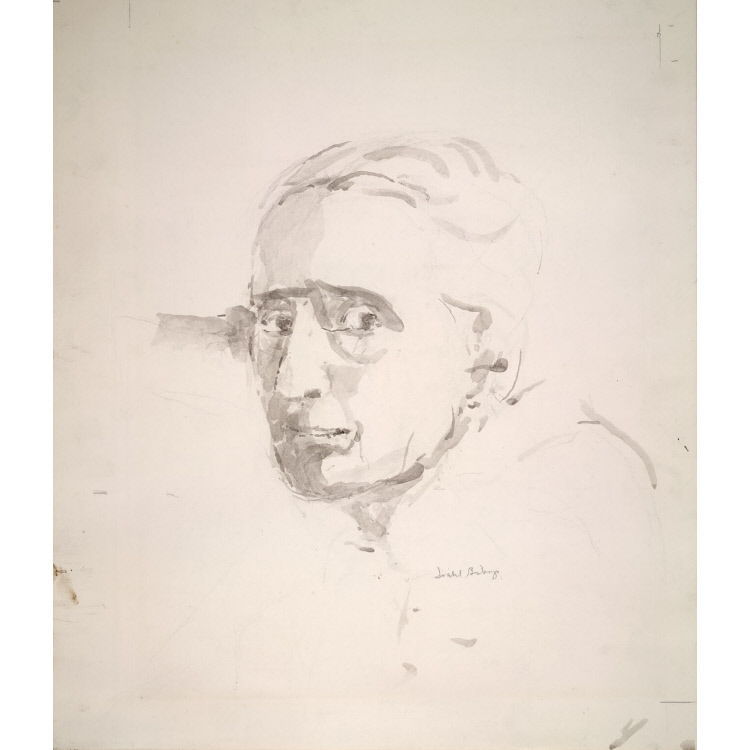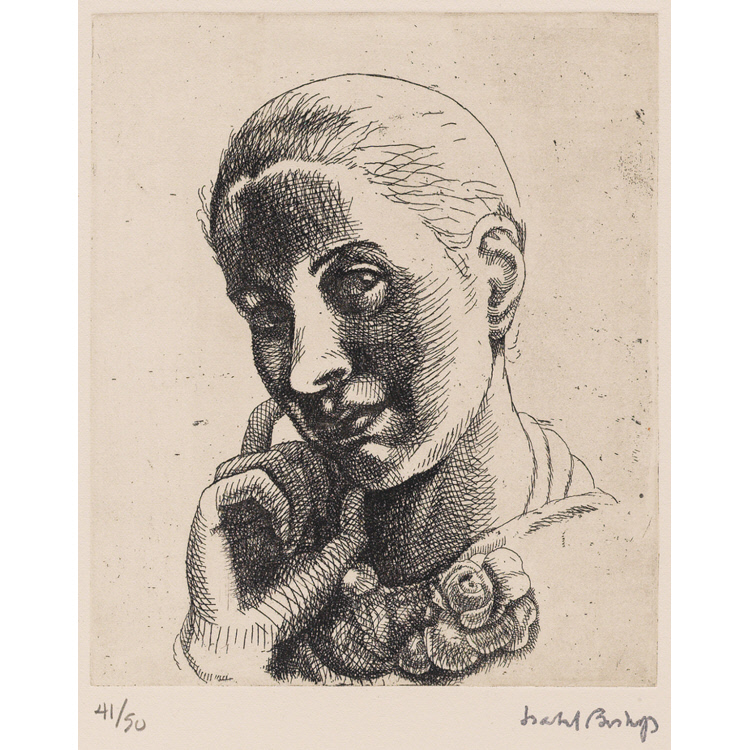Isabel Bishop
Hoping to become an illustrator, Bishop came to New York in 1918 and enrolled in the School of Applied Design for Women. In the early 1920s she transferred to the Art Students League to study painting with Kenneth Hayes Miller and Guy Pène du Bois. In 1934 she leased a studio at Union Square, where she observed and recorded the everyday activities of the derelicts and working-class people of the city. Subject matter was always important to Bishop, and she studied Mantegna, Piero della Francesca, and Chardin for their ideas of structure and composition. By the 1930s, her impeccably drawn figures brought Bishop recognition as one of the outstanding urban realists of the "Fourteenth Street School," a loosely affiliated group named for the area where Bishop, Reginald Marsh, and the Soyer brothers, among others, lived and portrayed the local scene. In later years Bishop turned from painting the female nude, a primary theme during the 1950s and 1960s, to portraying groups of figures in motion.
Virginia M. Mecklenburg Modern American Realism: The Sara Roby Foundation Collection (Washington, D.C.: Smithsonian Institution Press for the National Museum of American Art, 1987
Objects at Dallas Museum of Art (2)
Objects at National Portrait Gallery (2)
Objects at Colby College Museum of Art (3)
Objects at Archives of American Art (8)





























